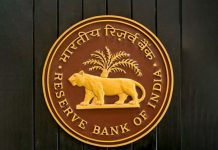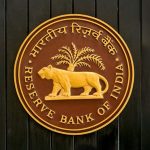Sugar prices in the world market have rallied due to various aspects from parts of the world. In talks with ChiniMandi News, Mr. Tom McNeill, Managing Director – Greenpool Commodities shared his views to provide a deeper understanding of the dynamic changes in the world sugar market and scenarios. He said, “In December 2019/January 2020, we started out seeing the 2020/2021 year as potentially a second year of deficit after 2019/20’s deficit. But three major factors rapidly changed that view, and the balance:
Covid, which spread rapidly from China initially to EU and US, and then around much of the rest of the world. Lockdowns reduced sugar consumption since quite a lot of sweet foods and drinks are consumed in areas like cafes, bars, restaurants etc.
Oil prices fell – as a result of both an OPEC oil supply surge – just as lockdowns and sharply reduced mobility impacted. Low oil prices reduced gasoline prices
In Brazil, low gasoline prices pressured ethanol prices, which fell sharply, to as low as 7 c/lb. Ethanol prices stayed much lower than gasoline all year, leading Brazilian mills to maximise sugar production, and reduce production of ethanol.
Sugar prices only picked up when some order was restored to the market, oil prices rose towards $40/barrel, gasoline prices rose, and ethanol prices moved back up towards 11-12 c/lb equivalent.
The sugar market outlook was then altered by these two main events – La Nina initially, and then India’s lack of 20/21 sugar policy, as well as a deep reduction in output for Russia, and to a lesser extent, the EU.
La Nina – the current La Nina is not severe, but it has made its presence felt with dry conditions in CS Brazil and Argentina, some heavy rainfall in Central America, prolonged monsoon in India and Thailand and early wet conditions during Australia’s harvest
La Nina has also in the past caused drought over the summer in CS Brazil and Argentina, a prolonged wet season in Australia and more cyclones than normal and frost in China’s cane areas. Each La Nina event is different, so it is still speculative as to what the eventual impact will be, and how long this La Nina remains (the largest Met authorities say its impact will last until around February 2021).
India – lack of sugar policy. This has been a disruptive factor, undoubtedly brought on by Covid-19 and a substantial impact on India’s budget. Cane prices via FRP have been increased, but as yet, the domestic minimum sugar price (MSP) has not been raised, and last week the MSP of INR 31/kg was breached on the downside. Millers are justifiably concerned because they must pay the new higher FRP or SAP, but have no rise in MSP sugar prices. Also, no export subsidy policy has been announced by the government, nor has a domestic buffer stocks policy been made for 20/21 year. This has added a lot of uncertainty to the global sugar market, which has had to adapt to India subsidising and exporting up to 6 million tonnes of sugar each year with very large subsidies (equivalent to 6 to 7 c/lb).
Sharing views on the global sugar prices trend in the upcoming days McNeill said, This week will be a short week due to the Thanksgiving holiday on Thursday in the US, and a usually quiet day on Friday. The March 21 futures price has just held above 15 c/lb in NY, but it would not be a surprise if sellers try to push the price down into the 14.5 c/lb range, given the weaker price action in the past week. Of course, macro events at the minute (stronger stock markets, stronger oil prices etc) may also have an impact.
One thing that is noticeable about NY futures is that futures prices between July 2021 and July 2023 are only between 13.5 and 12.5 c/lb, partly because this is around where CS Brazil’s cost of production is at present. Bear in mind that for many mills in Brazil, their cost of production is likely below 12.5 c/lb, and massively below India’s production cost ex-mill of over 21 c/lb. So, even at these relatively low prices, Brazilian mills are profitable, but India’s millers simply could not sell sugar into the global market without very large financial losses. This is why they are looking for a similar programme of government subsidies to 19/20 and in previous years.
On being asked how Covid-19 has changed the sugar market outlook, where we stand now in terms of global surplus / deficit and how have the global movements have changed he answered, “For 2020/2021, Green Pool Commodities is forecasting a crop year surplus of +3.7 mln mt (raw value). Back in January 20, our forecast was for a 1 mln mtrv deficit, and back in late 2019, we had expected the deficit would be as high as 3 mln mtrv.
The change has largely been due to Brazil’s switch from around 30 million tonnes sugar production to our current estimate of 38.3 million mt. Of course, there has been a drop in consumption globally due to Covid, while weather conditions and crop disease have impacted the crops for some other producers – e.g. forecasts for Russia and EU, as well as Thailand for 20/21 have been lowered.”
Lastly, sharing his thoughts on whether Brazil will be heading for another maximum sugar crop in April 2021, he said, “Yes, very highly likely. That is the irony of what is happening with India’s procrastination on policy announcements – the more the global price of sugar rises in anticipation that Indian millers need to be incentivised, the more likely it is that CS Brazil in their next crop (21/22) will maximise sugar production. That will force the world back into surplus later next year, which will be detrimental to global prices.”
“We also expect that the WTO case that sees other producers (Brazil, Guatemala, Australia) asking WTO to rule against India’s sugar programme in its current form will see some resolution in the first half of 2021 . All other sugar producers facing the global market will be watching very closely.” He further added.












